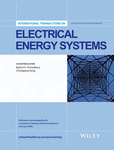An alternative algorithm for solving generation-to-load matching and loss allocation problems
Summary
This paper presents an alternative approach of Inherent Structural Characteristics Theory (ISCT), for solving loss allocation to network participants as well as generation-to-load matching problems in a deregulated environment. The mathematical formulations of ISCT, based on the fundamental circuit theory laws, are revisited. A Generation-to-Load Allocation Coefficient (GLAC) matrix for solving generation-to-load allocation and network loss allocation to load problems, for efficient transmission pricing, is formulated. The allocation of real and reactive power contributions, by individual generator, required to serve the network demands is also determined on the basis of the GLAC matrix. Total network losses are determined and allocated to individual network loads based on GLAC matrix. The approach is demonstrated using the standard IEEE 30 bus network. The results obtained are compared with that obtained using graph theory approach based on the solved power flow. The comparison of the results shows that the ISCT approach is reasonable and it is a good signal, which could be useful for pricing of electricity by the market regulators.




